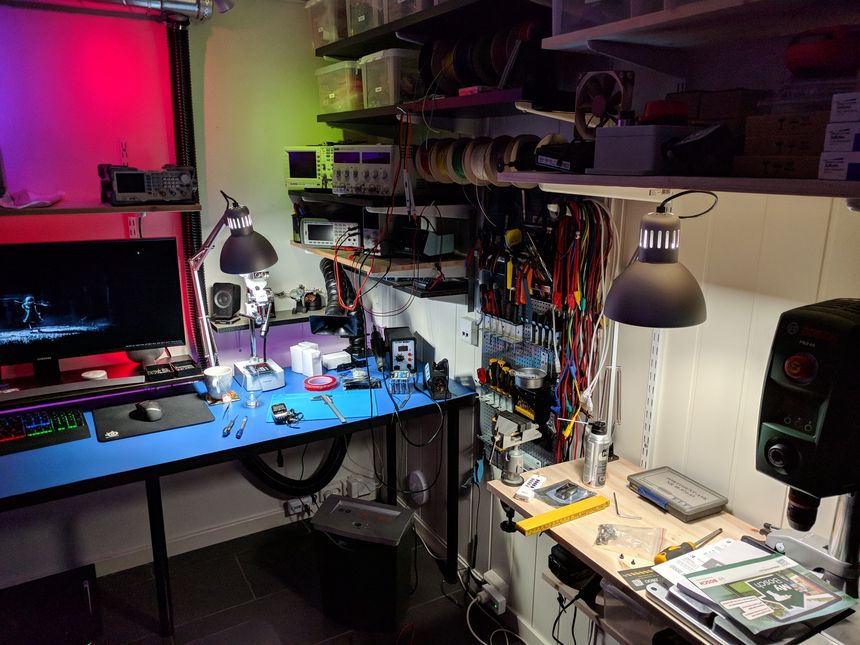My electronics lab is tiny, so I’ve had to make the best of the space I do have. Soldering with fume extraction, instruments like an oscilloscope, function generator, bench power supplies.
My electronics lab is more like an electronics corner; it’s the right half of the computer desk in my home office. The computer desk is 2 meters (6.5 ft) wide and 0.6 meters (2 ft) deep; so half that width is not a lot.
I’ve covered the entire desk with a grounded ESD mat, and the computer keyboard and mouse can be pushed under the monitor if I need more work surface. That means I can use the entire length of the desk if I need to. To best utilize the space I have several deep shelves above that holds my instruments and tools.
On the wall to the right is a peg-board for tools that I need readily available. Next to it is another tiny workbench where I have more storage shelves, a drill press, and a small bench vise. On this workbench is where I do hardware work, like cutting and drilling in plastic boxes.
For all my shelves I use a rail system; they distribute the load evenly over a large surface. That is great because some of my instruments and equipment is pretty heavy. The shelf height can also easily be adjusted, and the brackets replaced if I need to.
Table of contents
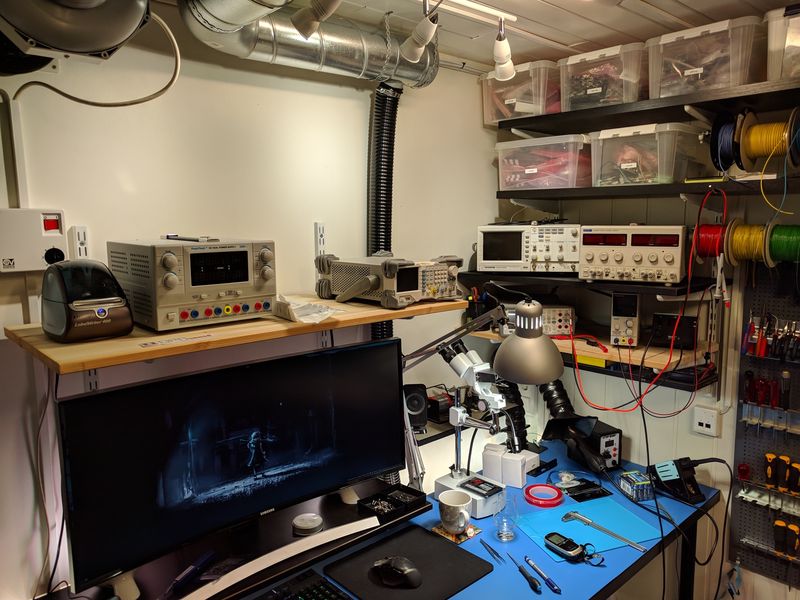
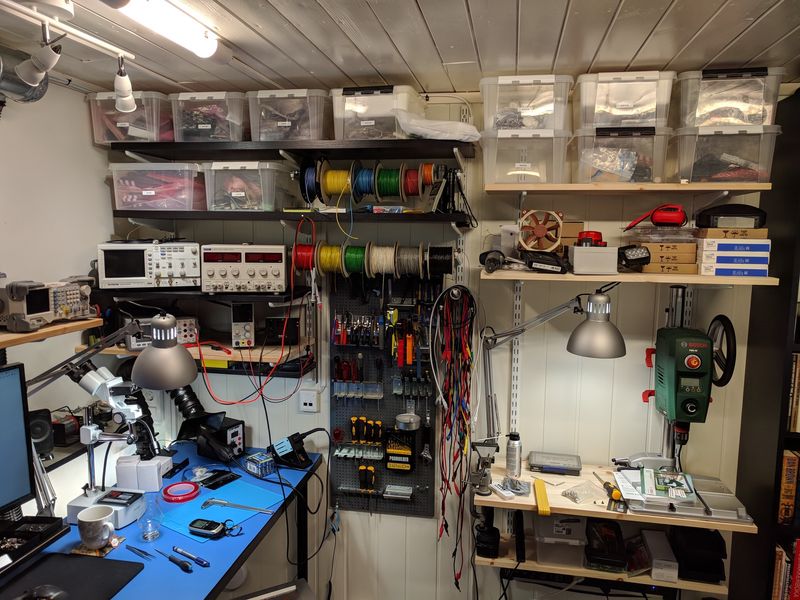

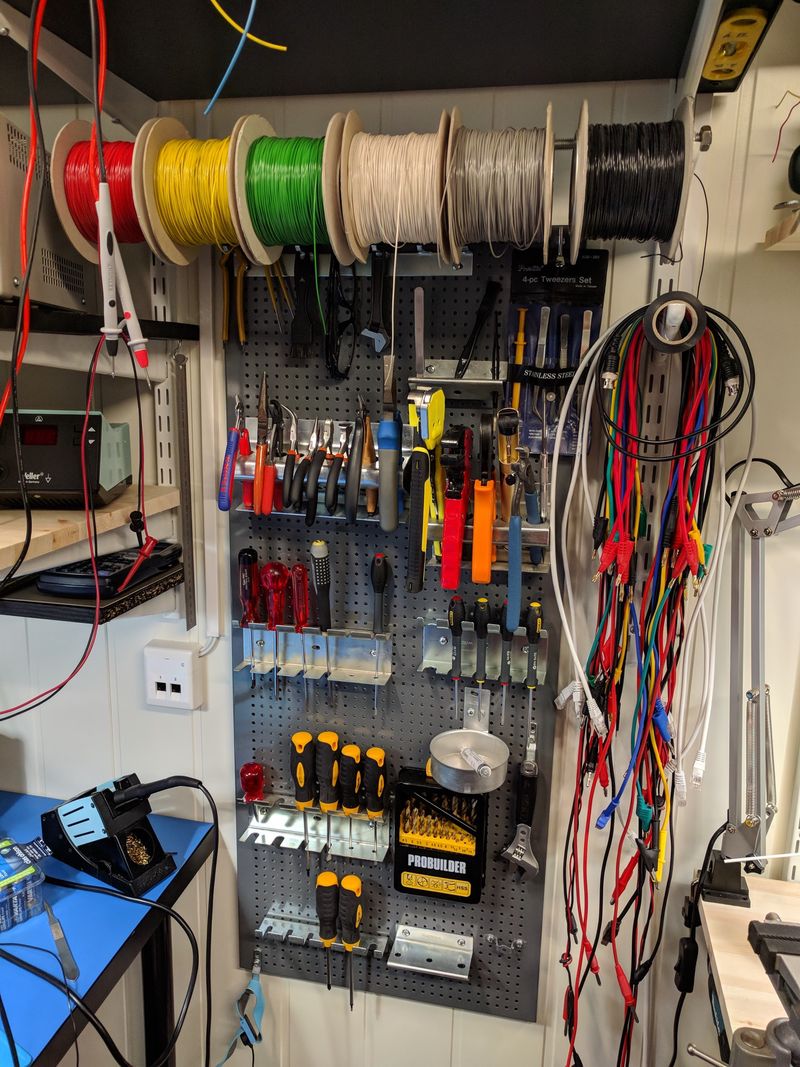
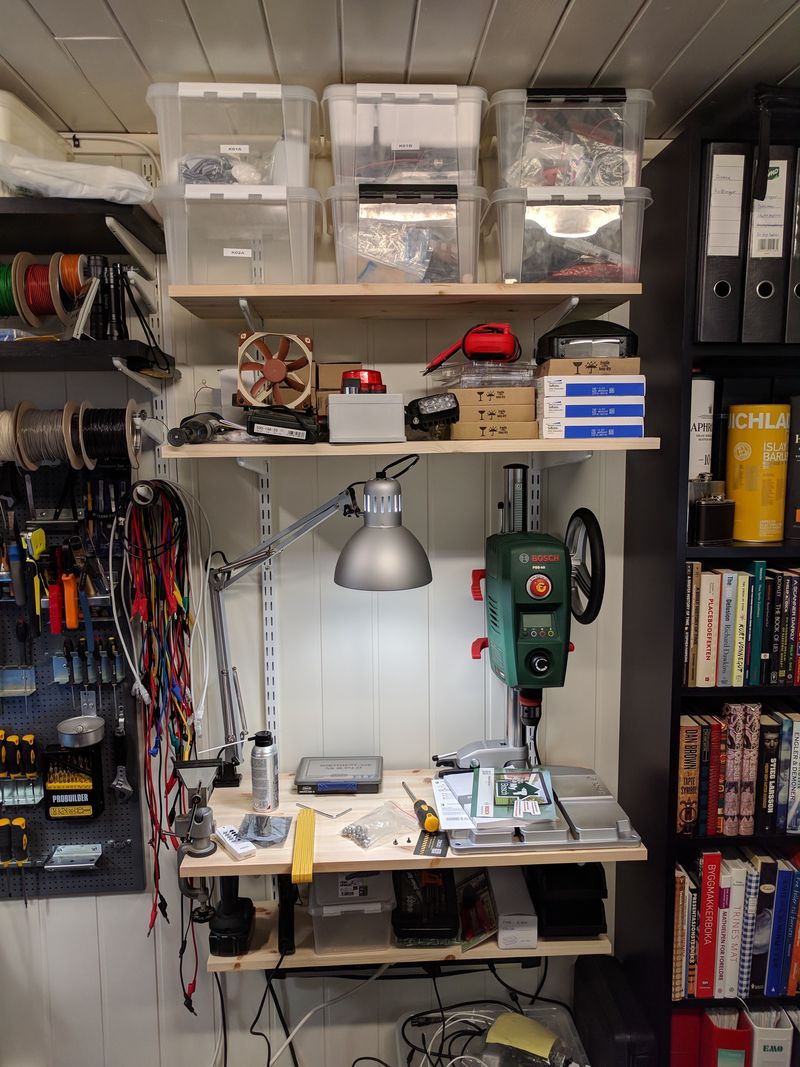
Fume extraction

Soldering gives off some nasty fumes, and since I am in a relatively small environment with no windows or natural movement of air, I got myself a fume extraction arm. The arm is flexible and stays in position, it is made from conductive material and grounded. That is important since moving air can cause a static charge build-up.
A 63mm (2.5") flexible hose runs from the extraction arm up to the 125mm (5") ventilation system. After a couple of 90º turns it connect to the ceiling intake and the fan in a T-piece.

The fan is a backward centrifugal extractor (RK 125L), capable of moving 168 m3/hour (99 ft3/min). This room is about 20 m3 (706 ft3), so at full speed, the air is replaced 8.5 times per hour, theoretically.
Since there is quite a lot of resistance in the 63mm flexible hose and extraction arm, I need to close the valve on the ceiling intake for the fume extraction to function correctly. Otherwise, the pressure is not low enough to achieve any suction at the extraction arm end. Both the valve and the duct joints have gaskets and make airtight seals.
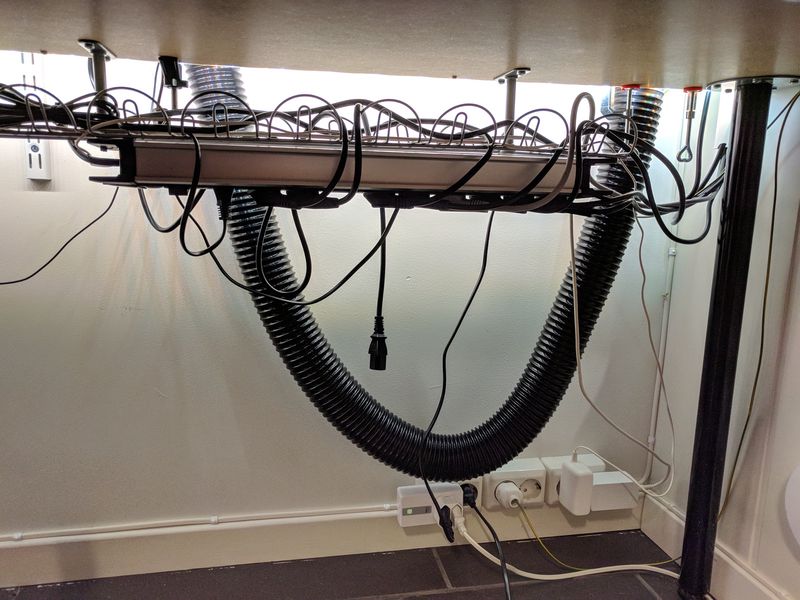
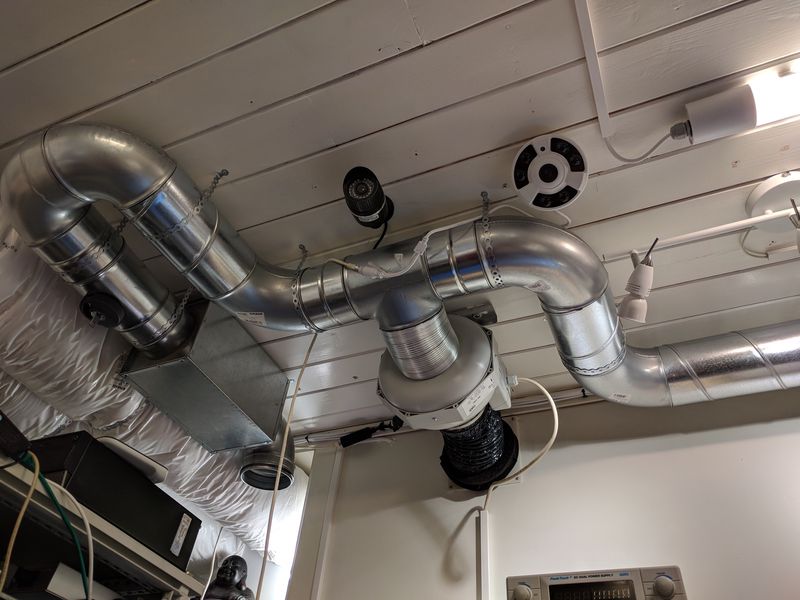
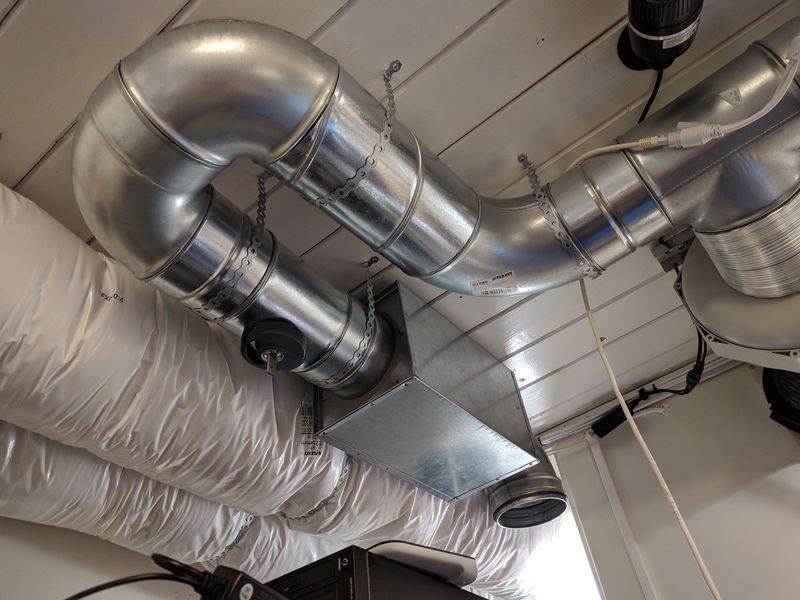
Work light
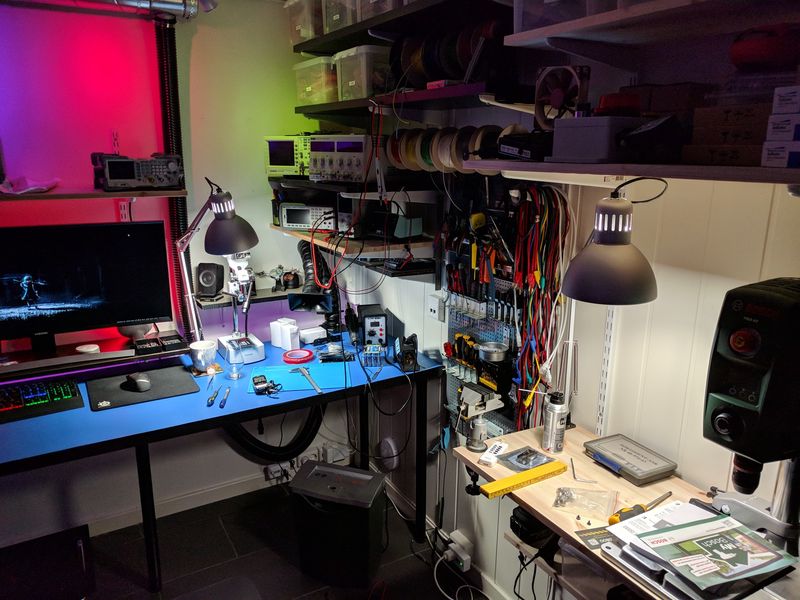
Good lighting is essential when doing small detailed work, and it seems to get more important as I get older. I have two IKEA Tertial lamps, one on each work surface, both with LED bulbs. The lamp on the electronics desk has an 11 W bulb, outputting 1500 lm. The other has an 8 W bulb, outputting 1000 lm. Both have a color temperature of 4000 K, which is my favorite.

I’ve measured the light output on the electronics lab bench to 2380 lx, 1 lx = 1 lm/m2. That’s quite a lot and falls within the “Performance of visual tasks of low contrast and very small size for prolonged periods of time” category, ranging from 2000 to 5000 lx.
In the ceiling, I have two LED lamps, a big one in the center with 4000 lm output and a smaller one above the electronics lab with 1600 lm output. These have a color temperature of 3000 K.
I have a total of 14 Philips Hue lights in the home office; six of which are used for lighting the desk. Two Bloom lamps behind the monitor as bias lighting, three GU10 spots in the ceiling above the work area and a LED strip behind the desk facing the wall.
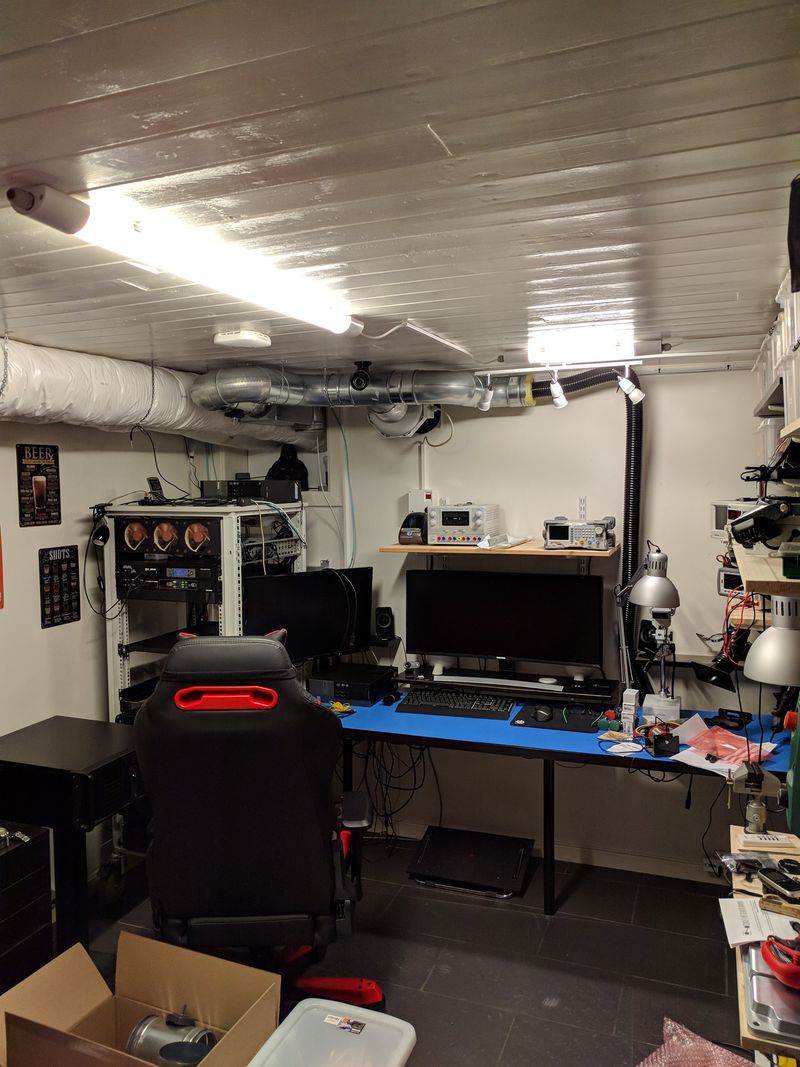

ESD protection
ESD protection is important when working with electronic components, build-up and sudden discharge of static electricity can destroy sensitive electronics.
I’ve covered the entire desk with an ESD mat, both it and the extraction arm are conductive and connected to mains ground through a 1M ohm resistor. That allows for a slow and controlled dissipation of any static electricity build-up. I also have an ESD wrist strap readily available.
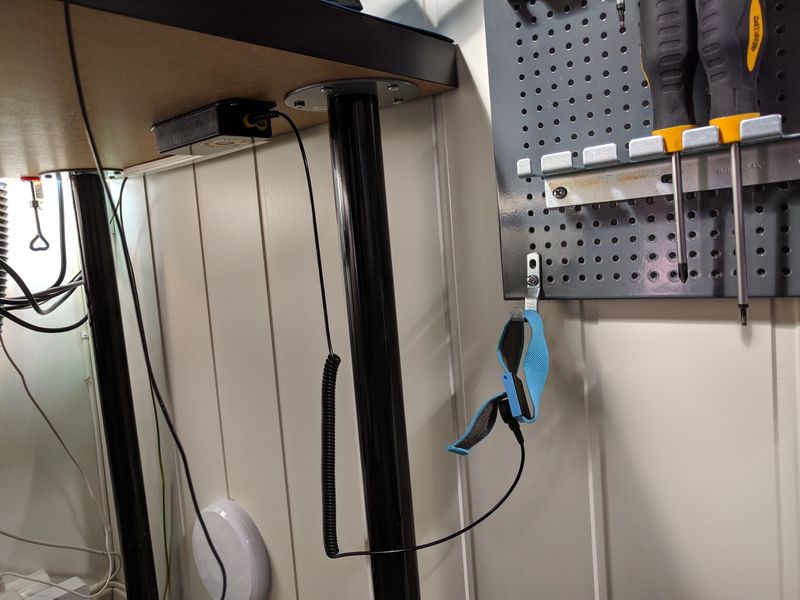
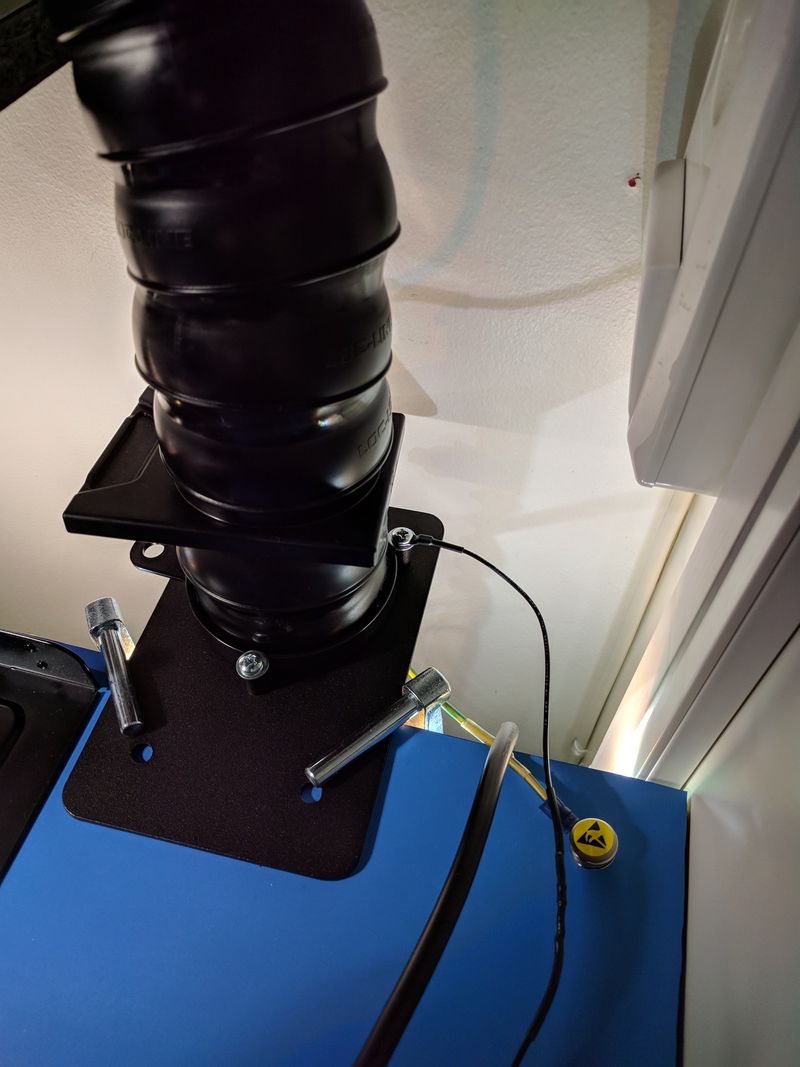
Parts storage and logistics
I order most of my parts from China, and since shipping takes forever, I like to keep quite a lot of parts on hand.

I have three drawer cabinets for small components and use different sizes of clear plastic boxes for bigger things. To keep track of my projects, parts and stock levels; I’m using a self-made logistics system.

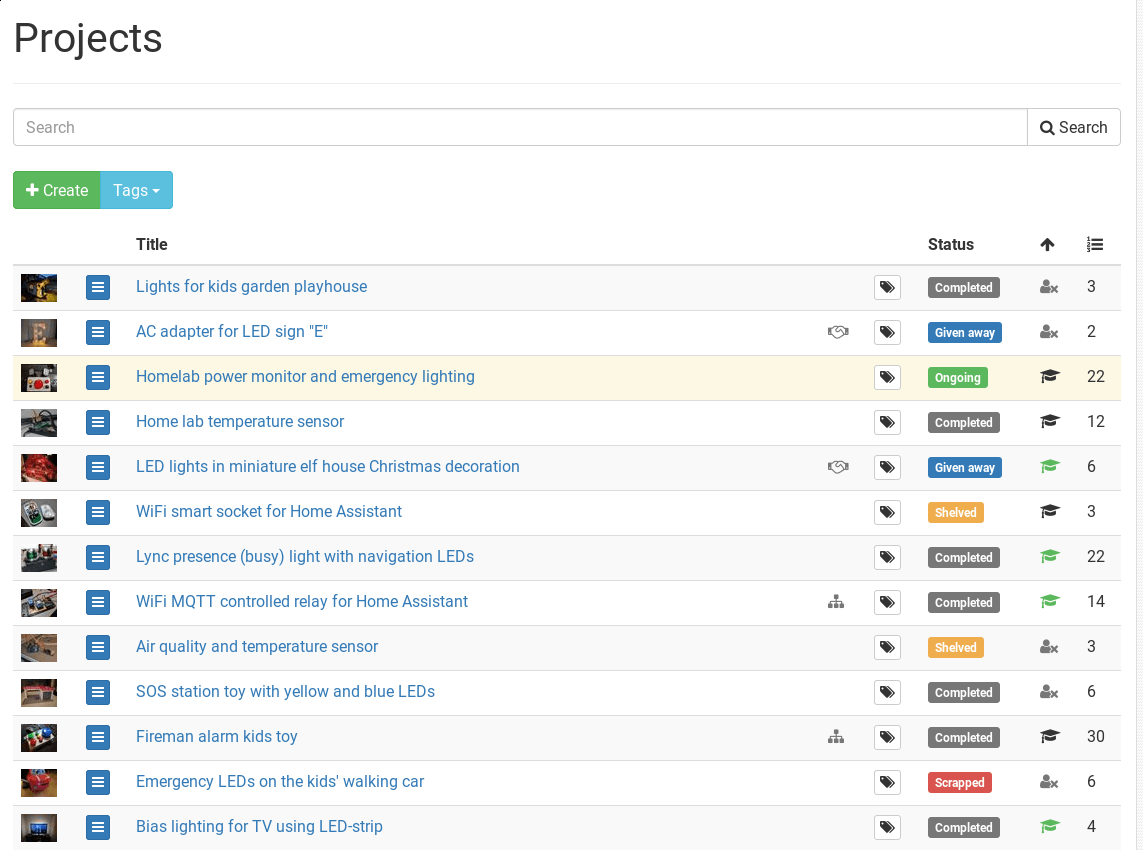
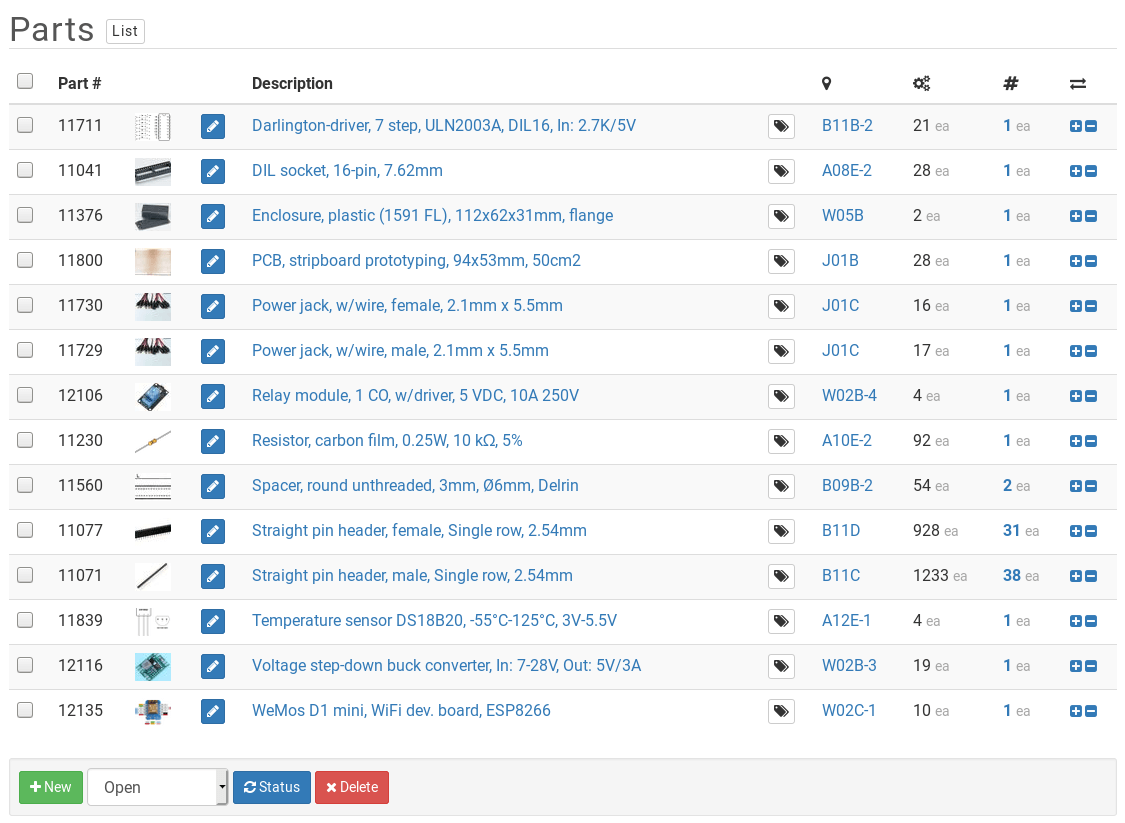
With this, I can create a project, add parts and get a parts lists which shows me if I have enough in stock to build it — and where all the pieces are located. All drawers, boxes, and assortments are labeled with a location ID, which the logistics system keeps track of.
By setting reorder points, the system can also notify me when it’s time to refill the stock. The logistics system is pretty useful, but also a lot of fun to make and maintain. I’m one of those people that find logistics enjoyable.
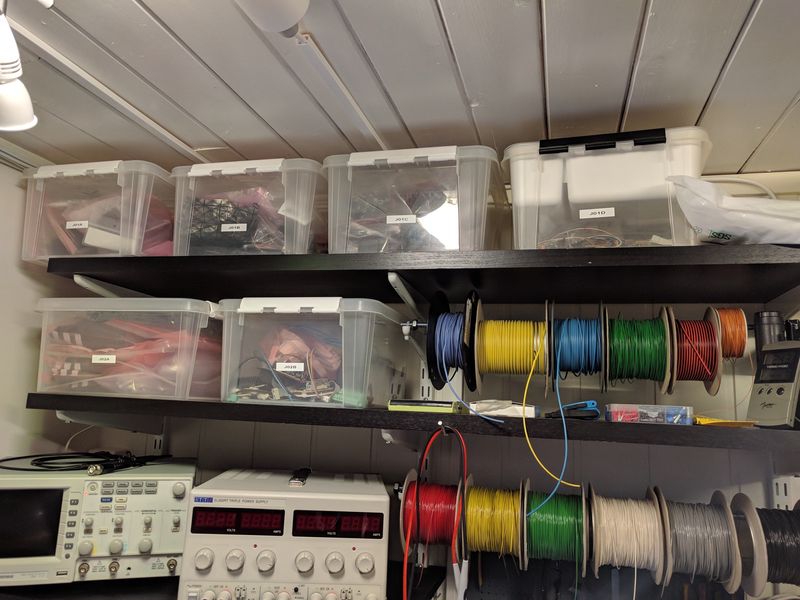
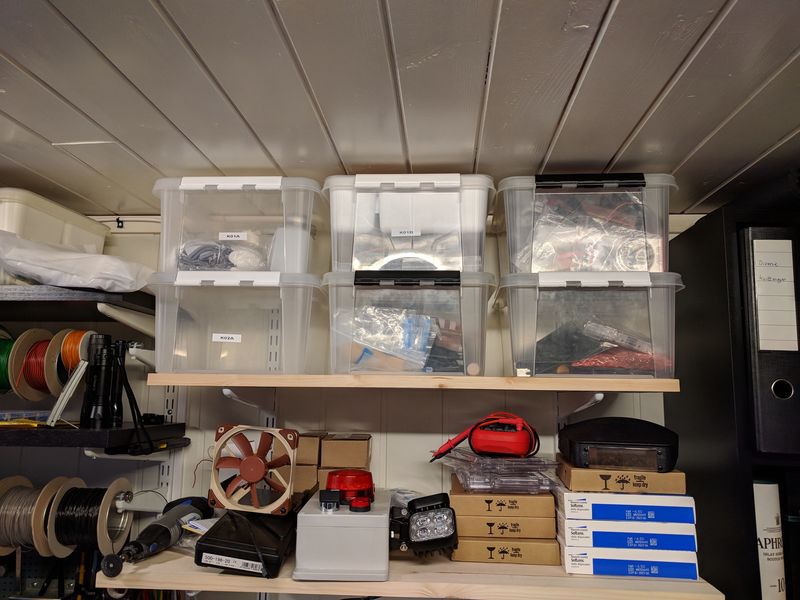
Last commit 2024-11-11, with message: Add lots of tags to posts.
